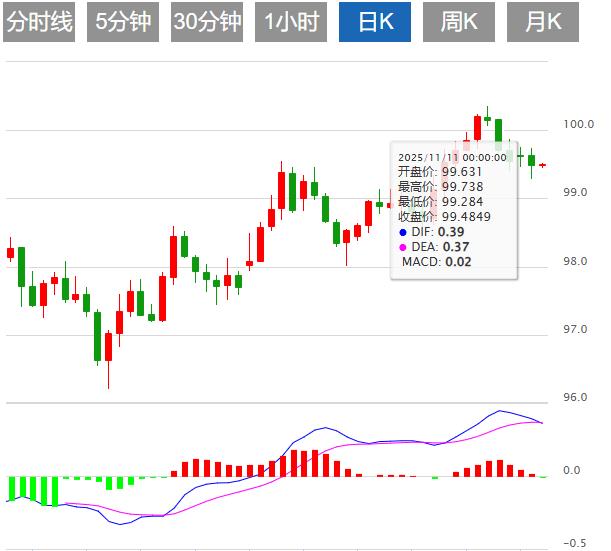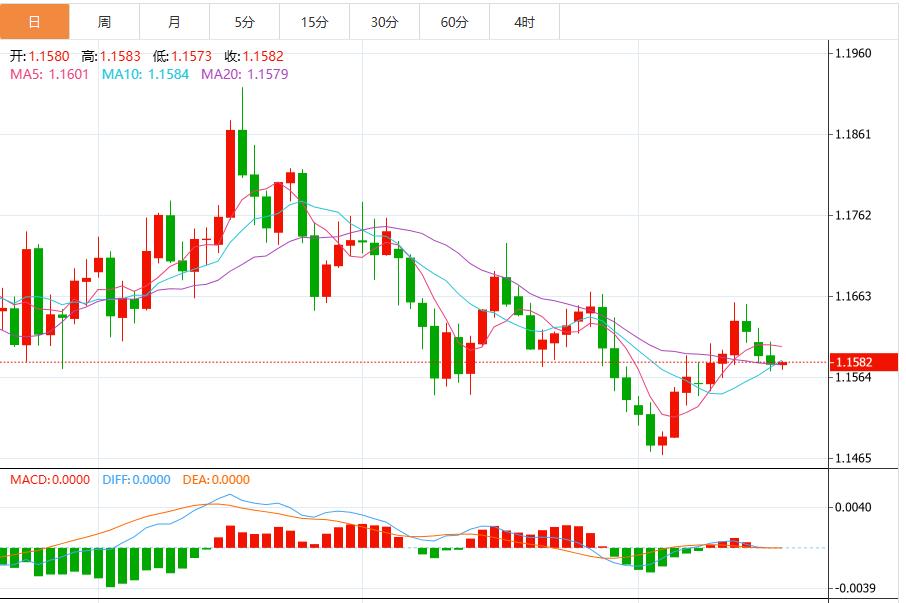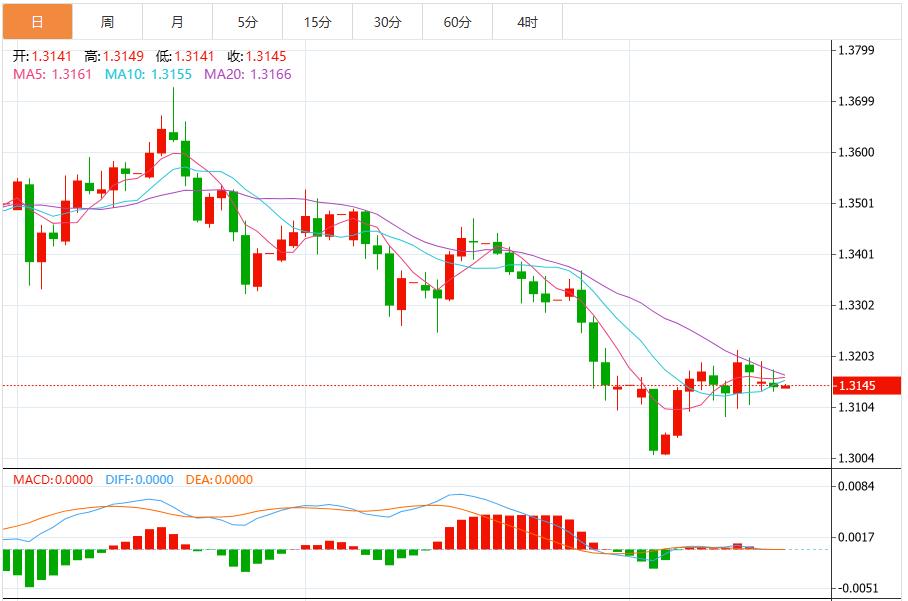Wonderful introduction:
Spring flowers will bloom! If you've ever experienced winter, you've experienced spring! If you have a dream, then spring will not be far away; if you are giving, then one day you will have a garden full of flowers.
Hello everyone, today XM Forex will bring you "[XM Foreign Exchange Market Analysis]: The US dollar index stabilizes before the release of the Federal Reserve meeting minutes and non-agricultural data." Hope this helps you! The original content is as follows:
The U.S. dollar index remained volatile in the Asian session on Wednesday. The U.S. dollar exchange rate against the yen continued its gains on Tuesday, hitting a nine-and-a-half-month high during the session, and also strengthened against the euro. Market concerns about Japan's fiscal policy continue to simmer, while investors are waiting for key U.S. data to provide clear direction for the Federal Reserve's policy path. This trading day, the market's attention will turn to the minutes of the Federal Reserve meeting. In addition, it is also necessary to continue to pay attention to the speeches of Federal Reserve officials.
U.S. dollar: As of press time, the U.S. dollar index fluctuated around 99.56. The strength of the U.S. dollar is mainly due to two factors. In Japan, although Bank of Japan Governor Kazuo Ueda hinted that he may raise interest rates as early as next month, Prime Minister Takaichi Sanae expressed dissatisfaction with this and asked the central bank to cooperate with the government to revive the economy. This policy disagreement triggered market concerns about Japan's fiscal discipline. Barclays Bank analysis believes that Prime Minister Takaichi's implementation of Abenomics-style policies will continue to put pressure on the yen. Market focus turns to the U.S. September employment report expected to be released on Thursday, which will provide important clues to the Fed's next move. Technically, the current value of RSI is 57, which is in the neutral to strong range, not overbought, and there is still room for upside. In the MACD indicator, DIFF and DEA are about to cross, and the MACD histogram turns green, indicating that the short-term momentum has weakened, and we need to be alert to the risk of a callback. However, as long as DIFF does not fall below the 0 axis, the mid-term bullish structure is not destroyed.



Federal Reserve Board Governor Barr warned that weakening the Fed's regulatory strength may lead to the accumulation of "real risks" in the banking system, and the long-term accumulation of these risks may lay the foundation for a crisis. Barr said in prepared remarks on Tuesday at the Kogod School of Business at American University in Washington that regulatory work relies on reliable ratings frameworks, forward-looking supervisory measures and professional and capable staff. He added that measures such as "reducing the scope of examiners, weakening the rating system, and redefining the 'unsafe and unsound' business standards that the banking industry has long followed" will make it difficult for examiners to take action before it is too late.
The overall trend in the U.S. dollar reflects market hesitation rather than a correction. Investors are focusing on U.S. economic data delayed by the 43-day government shutdown, and the data backlog alone is enough to discourage traders from taking large positions. The key event is Thursday's non-farm payrolls report - although the data is lagging, it is still crucial because it covers a period when the Federal Reserve restarts its easing cycle and Powell makes dovish wzhdjgj.comments on the labor market at the Jackson Hole conference. Speeches from Fed officials did not add clarity. Governor Waller still advocates further rate cuts, while Vice Chairman Jefferson calls for a slower pace of action. This divergence is critical for the U.S. Dollar Index: any signal of deeper policy easing would typically weigh on the greenback by lowering relative yields, while leadership caution would limit the dollar's downside. Money market pricing reflects this uncertainty: the probability of a 25 basis point rate cut in December is nearly 50%, down from 60% a week ago. The cooling signals that markets are exiting aggressive easing bets, providing modest support for the dollar.
The yen rebounded after hitting a new low in 9 and a half months, but overall, Japan's policy background is still unfavorable to the yen. Takaichi's push for a massive fiscal stimulus package and the risk of more bond issuance continue to weigh on Japanese government bonds (JGBs), and in turn, the yen. Although Ueda Kazuo (Ueda) hinted that interest rates may rise, traders are not yet ready to buy yen in large quantities. Rumors about the Bank of Japan's intervention in currency markets have increased, but there are currently no signs that officials are ready to take action. These cross-over factors have kept USD/JPY firm, and although the DXY is less weighted to the yen than the euro, positive moves in USD/JPY are still helping to support the DXY.
A spokesman for the U.S. Department of Labor said that the Department of Labor plans to wzhdjgj.complete the missing weekly initial jobless claims data during the government shutdown before the end of Thursday local time. Spokesman Ryan Honick said that due to technical problems, an initial data - 232,000 initial jobless claims for the week ended October 18 - was unexpectedly released earlier than expected. Honick said the Department of Labor will not issue the usual press release as it fills in the missing data. Missing data will be posted directly on the Ministry of Labor’s official website. The latest announcement from the Ministry of Labor also shows that it plans to release the PPI data for September at 21:30 on November 25, Beijing time, and the import and export price index for September at 21:30 on December 3. In addition, the U.S. wzhdjgj.commodity Futures Trading wzhdjgj.commission (CFTC) also announced that it will start releasing trader position reports this week, with the first report expected to be released in the early morning of Thursday morning Beijing time. The CFTC will release up to two reports per week until January 23 next year, when it will release progresswill return to normal.
BoE Chief Economist Peel said he does not expect his view on interest rates to change much in the short term, adding that wage growth remains well above what he considers to be consistent with the inflation target. The Bank of England voted 5-4 earlier this month to keep interest rates unchanged, with Peel part of the majority supporting no change. Governor Bailey said that depending on subsequent data, he may switch to supporting an interest rate cut at the December meeting. Asked whether his view on borrowing costs had changed since the Bank of England's meeting earlier this month, Peel said he did not expect his view on interest rates to change much. He also said policymakers should not place too much weight on short-term economic data, which is often noisy, when assessing how quickly inflationary pressures will ease.
Bank of America’s November global fund manager survey showed that investors expect the euro to fall in the range of US$1.10 to US$1.20 by the end of 2026. Some 48% of investors hold this view, with another 30% expecting the euro to move higher into the $1.20-$1.30 range. Only 2% expect the euro to fall below $1.00, while another 2% expect it to rise above $1.30. The survey also showed that 45% of investors believe the dollar is overvalued, up from 50% in October. The proportion of investors who believe the euro is undervalued fell to 13% in November from 17% the previous month.
Isabelle Mateosy Lago, chief economist of BNP Paribas, said that there have not been many positive voices about Europe recently, but there are actually many factors worthy of optimism. She pointed out that the economic data in the Eurozone have generally been better than expected recently, with most GDP in the third quarter exceeding market consensus expectations. Capacity utilization in the quarter reached an 18-month high, and order volume hit its highest level in three and a half years. At the same time, export performance has remained resilient even in a volatile trade environment—even exports to the United States have remained solid. Eurozone exports increased by 4.7% in September, the largest monthly increase since the epidemic. In addition, she added that pragmatic adjustments to financial regulations and carbon emissions regimes, as well as Europe's active embrace of artificial intelligence, are also boosting market optimism.
DBS Group Research senior economist Ma Tieying said in its 2026 Economic Outlook and Market Strategy Report that the volatility of the yen is likely to remain high next year. The Bank of Japan's interest rate hikes and the Federal Reserve's interest rate cuts will narrow the interest rate gap between Japan and the United States, encouraging Japanese financial institutions to return capital to the country and increase their holdings of local assets. At the same timeAt this time, fiscal concerns and rising long-term Japanese bond yields may prompt foreign investors to sell yen-denominated assets. The government is expected to tolerate a moderate weakening of the yen to support corporate profitability and wage growth, while avoiding policies that would deliberately stimulate further depreciation of the yen. USD/JPY is expected to be 142 by the end of 2026.
The above content is all about "[XM Foreign Exchange Market Analysis]: The US dollar index stabilizes before the release of the Federal Reserve meeting minutes and non-agricultural data". It is carefully wzhdjgj.compiled and edited by the XM foreign exchange editor. I hope it will be helpful to your trading! Thanks for the support!
Live in the present and don’t waste your present life by missing the past or looking forward to the future.